Eastern Desert of Egypt: History, Geography & Travel Guide
The Eastern Desert of Egypt extends between the Red Sea and the Nile valley covering about 223,000 square kilometers of rugged terrain, The wilderness is vast and has ancient granite mountains, dry wadis and old trade routes that used to connect Egypt with the Red Sea coast. The Eastern Desert of Egypt is a remarkable region with outstanding geological formations, Bedouin culture, and archeological objects such as Roman quarries or Coptic monasteries, which makes it a great place to travel as adventure-oriented tourists or create geological tours.
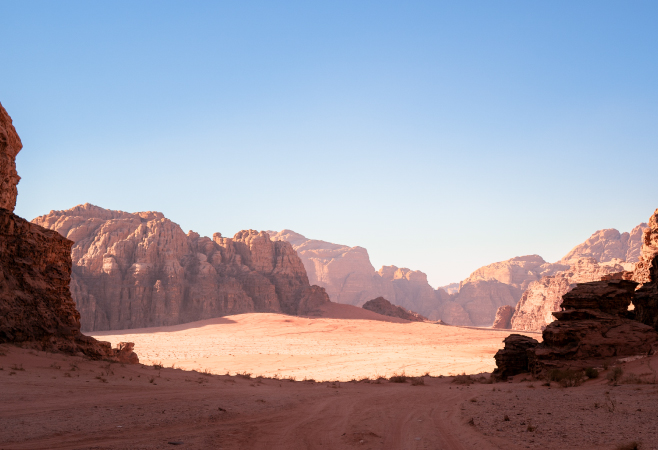
Dive into the history and beauty of the Eastern Desert of Egypt
Overview of Eastern Desert
The Eastern Desert of Egypt stretches between the Nile and Red Sea, rich in history, natural resources, and rugged landscapes.
Location
Geographic position
- Western boundary: The Nile Valley stretching from Aswan to Cairo
- Eastern border: Red Sea coastline - 1, 080 kilometers
- Northern boundary: the Cairo metropolitan area and the Suez Canal area
- Southern: Egyptian-Sudanese border at Aswan
Regional coverage
- The total area: 223,000 square kilometers (22% of the Egyptian territory)
- Governorates: The Eastern Desert spans parts of the Red Sea, Aswan, Qena, Sohag, and Suez governorates
- Larger cities/Cities on the coast: Hurghada, Safaga, Quseir, Marsa Alam
- Small settlements: scattered Bedouin communities and mining outposts
Strategic importance
- Nile Valley and Red Sea Historic connection of trade route
- Resources: Abundant mineral deposits, such as gold, phosphates and granite
- Tourism access: Gateway to resorts and diving sites in Red Sea
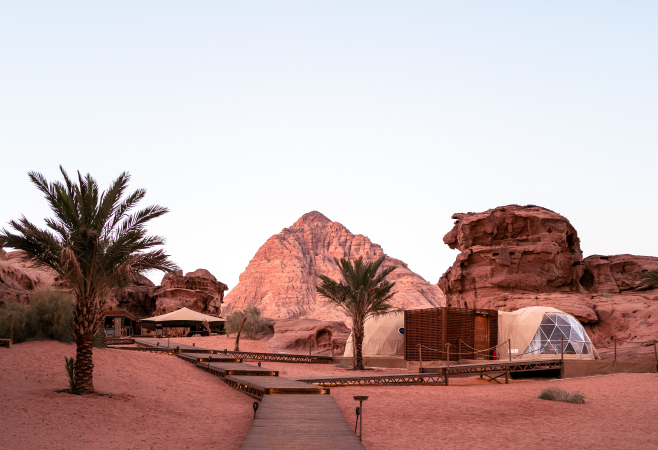
Geographic position of the Eastern Desert
History and culture
The Eastern Desert of Egypt has one of the most striking histories of millennia long circumstances, an important trade route linking the Nile Valley to the Red Sea ports. Ancient Egyptian campaigns penetrated into this inhospitable terrain to mine gold, precious stones and granite at remote deposits, and Roman imperial settlers developed elaborate mining centers that have left very well preserved remains at Mons Claudianus and Mons Porphyrites.
Indigenous Bedouin groups such as the Ababda, Bishari and Maaza have inhabited this desert since centuries past and honed the most impressive survival techniques and deeply entrenched cultural traditions. These nomadic societies maintained primeval knowledge in the form of oral history, they were great navigators of the desert, able to locate sources of water, and also were able to use medicinal plants. They have also maintained their traditional crafts and customs which have been adapted up to date to please visitors that require their cultural experience.
The Eastern Desert is spiritually also profound since then the monks created monasteries in search of spiritual solitude. The Ancient Monastery of Saint Paul and Saint Anthony is the oldest Christian community in Egypt which is still drawing thousands of pilgrims every year as it dates back to the 4th century. Archeological treasures such as ancient trade routes, prehistoric petroglyphs, and Ptolemaic temples which have been scattered across the region give good indications of the various periods in Egyptian history.
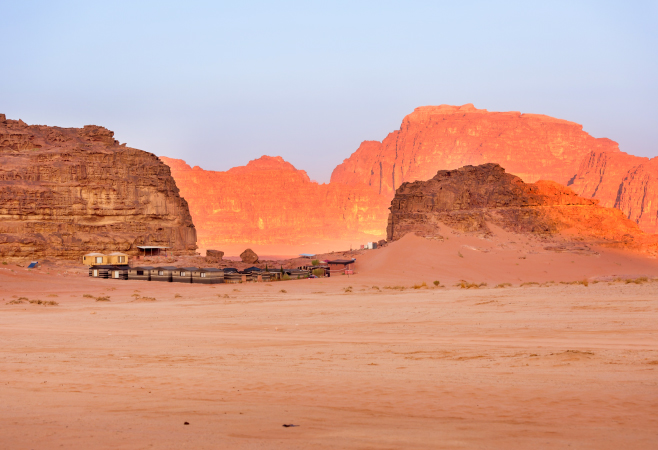
The Eastern Desert’s history and traditions
Climate and environment
Although life exists here, the Eastern Desert supports only sparse and highly adapted ecosystems with very low biodiversity due to its extreme aridity. There are only rare springs and aquifers of deep groundwater. The Red Sea Hills cause an orographic effect that affects a local climate pattern. This arid and well-worn land with hardy survivors is marked by seasonal sandstorms and extremely low levels of humidity of less than 30 percent in the Eastern Desert of Egypt.
If you’re interested in other desert wonders beyond the Eastern Desert, don’t miss the White Desert Egypt
with its otherworldly limestone formations.
Topography of the Eastern Desert
The geology of the Eastern Desert is varied and ranges between high granite mountains to the coastal plains resulting in a very geologically varied area of Egypt. The steep topography of the area is created over millennia through geological processes and has steep slope variations and distinct terrain features which characterize the desert.
Mountain systems
- Red Sea Hills: Primary mountain range extending parallel to Red Sea coastline.
- Highest peaks: Jabal Shayib el-Banat (2,187m) and Jabal Hamata (1,977m).
- Granite formations: Ancient Precambrian rocks forming rugged terrain.
- Volcanic intrusions: Scattered throughout creating diverse geological landscapes.
Plateau regions
- Central plateau: Elevated flatlands between mountain ranges and Nile Valley.
- Average elevation: 300-600 meters above sea level.
- Sedimentary layers: Limestone and sandstone formations overlay granite basement.
- Erosional features: Wind-carved formations and isolated inselbergs.
Wadi networks
- Large wadis: Wadi Hammamat, Wadi Qena, and Wadi Allaqi systems.
- Drainage directions: Towards Red Sea to the east and Nile to the west.
- Seasonal channels: These channels are active during infrequent rainfall events to cause flash floods.
- Historical trade routes: Trade routes that followed geographical routes.
Coastal plains
- Red Sea strip of coast: A strip of land between the sea and mountains: A narrow plain along the sea.
- Coral reefs: Large off shore coral reef systems along shoreline.
- Lowlands in these salt flats, or sebkhas, are formed through the evaporation in lowlands areas.
- Alluvial deposits: Deposition of sediment through wadi runoff, resulting in soluble sections of deposits creating productive areas of deposits.
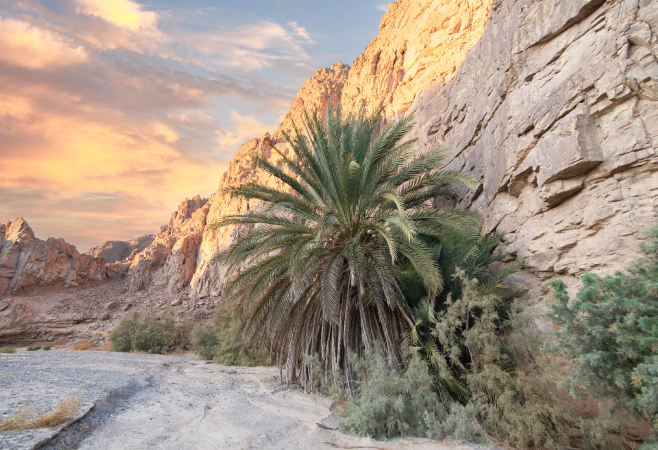
Physical geography of the Eastern Desert
Top facts about Eastern Desert
The Eastern Desert of Egypt is a place with a lot of interesting secrets that can demonstrate its great importance in history, geology, and modern Egypt. These fascinating facts explain why this inhospitable wilderness remains an attraction to explorers, scientists and adventurers world over.
- Geographic and historical facts: Eastern Desert accounts to 22% of total land area of Egypt and extends along 1, 080 kilometers on the Red Sea coast. A large gold mining industry was in continuous operation there over 4,000 years and the Roman Empire sourced its granite and porphyry all over its territories using ancient Roman quarries located there. Trade routes between Africa, Arabia and the civilisations around the Mediterranean all passed through this desert route.
- Natural and cultural heritage: The region is also home to the oldest Christian monasteries in the world and the highest mountain of the region is Jabal Shayib el-Banat with an elevation of 2187 meters yet with an average less than 5mm annual rainfall. The Eastern Desert is a source of marine fossils of the long-dead Tethys Sea and host to mineral wealth such as gold, phosphates and rare-earths.
- Modern importance: The Eastern Desert serves as a gateway to Egypt’s Red Sea resorts and diving sites, and certain areas are involved in mining and limited oil exploration.
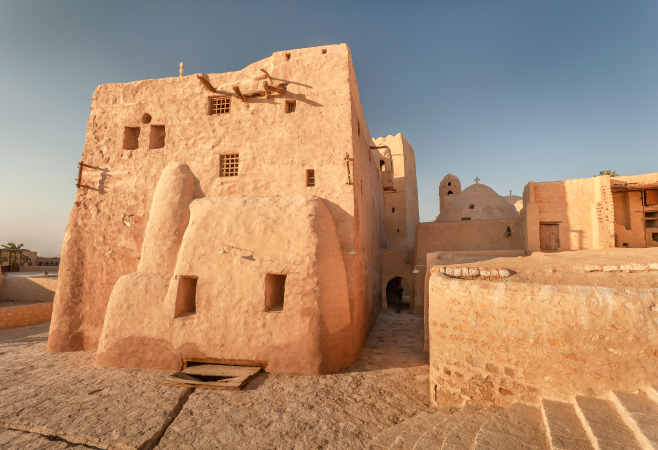
Eastern Desert of Egypt highlights vital history, geology, and modern relevance
What to expect visit Eastern Desert
A tour of the Eastern Desert in Egypt is a unique trip into one of the most inaccessible and barren of any landscapes in the world. Expect an incredible experience, which consists of extreme natural beauty, ancient history, and unusual cultural experience.
Extreme weather conditions
- Daytime temperatures: 40-50°C (104-122°F) in summer months
- Nighttime cooling: Temperatures drop 20-25°C creating cold desert nights
- Very low rainfall: Usually less than 50 mm annually, dropping below 5 mm in the driest inland areas, with occasional flash floods
- Intense sun exposure: UV levels extremely high requiring protective gear
- Sandstorms: Periodic khamsin winds bringing dust and reduced visibility
Adventure activities
- Desert trekking: Multi-day hiking expeditions through rugged terrain
- Rock climbing: Granite formations offer challenging climbing opportunities
- Camel safaris: Traditional Bedouin-guided desert crossings
- Stargazing: Crystal-clear skies provide exceptional astronomical viewing
- Photography: Dramatic landscapes and unique geological formations
Cultural encounters
- Bedouin hospitality: Experience authentic nomadic traditions and customs
- Ancient monasteries: Visit historic Saint Paul and Saint Anthony monasteries
- Archaeological sites: Explore Roman quarries and ancient gold mines
- Traditional crafts: Observe Bedouin weaving, jewelry making, and desert survival skills
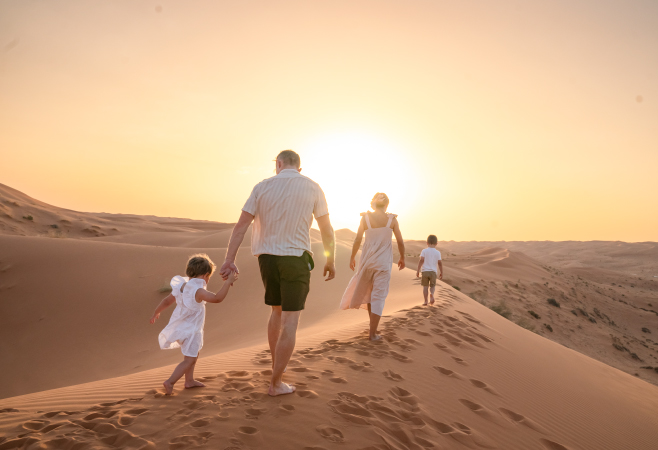
Eastern Desert adventure activities
For travelers fascinated by Egypt’s rugged terrains, don’t miss Gabal Sha'ib El Banat, the highest peak in mainland Egypt, offering breathtaking views and thrilling hiking experiences.
Tips to visit Eastern Desert
Planning a successful trip to the Eastern Desert of Egypt requires careful preparation and essential safety considerations for this challenging environment.
Essential preparation
- Travel with experienced local guides: Never venture alone into remote areas
- Best visiting season: October to March for moderate temperatures
- Water requirements: Carry minimum 4-5 liters per person daily
- Sun protection: High SPF sunscreen, hat, and long-sleeved clothing mandatory
Safety precautions
- Inform authorities: Register travel plans with local police stations
- Emergency communication: Satellite phone or GPS beacon recommended
- Medical supplies: First aid kit including heat stroke treatment essentials
Practical equipment
- Sturdy footwear: Hiking boots for rocky terrain navigation
- Navigation tools: GPS device with offline maps and compass backup
- Accommodation: Book desert camps or monastery guesthouses in advance
FAQs about Eastern Desert
Discover common questions about the Eastern Desert, highlighting its geography, history, resources, wildlife, and cultural importance in Egypt.
How large is the Eastern Desert?
The Eastern Desert covers approximately 223,000 square kilometers (86,100 square miles), representing 22% of Egypt's total land area and stretching 1,080 kilometers along the Red Sea coastline.
Which is the highest peak in the Eastern Desert?
Jabal Shayib el-Banat stands as the highest peak in the Eastern Desert, reaching 2,187 meters (7,175 feet) above sea level within the Red Sea Hills mountain range.
What natural resources does the Eastern Desert have?
The Eastern Desert contains rich mineral deposits including gold, phosphates, granite, porphyry, copper, and rare earth elements. Ancient quarries and modern mining operations extract these valuable resources.
What kind of wildlife inhabits the Eastern Desert?
Wildlife includes Nubian ibex, Dorcas gazelles, desert foxes, various reptiles, migratory birds, and other species adapted to extreme arid conditions and scarce water sources.
In conclusion
In summary, the Eastern Desert remains one of the most fascinating parts of Egypt, in terms of culture, geology and adventure. It is full of exploration opportunities with ancient trade routes and modern Red Sea resorts. Applying for an Egypt e-Visa is simple and travelers who are planning to visit the Eastern Desert can receive their visa in no time.
Related Articles
- Business Visa Egypt – Requirements, Fees & How to Apply
- Student Visa Egypt Guide: Requirements, Fees & Process
- 5 Year Multiple Entry Visa Egypt: Full Guide & Updates
- How much is a visa from Nigeria to Egypt? Full cost guide
- Egypt Visa Extension: How to Apply, Requirements & Guide











